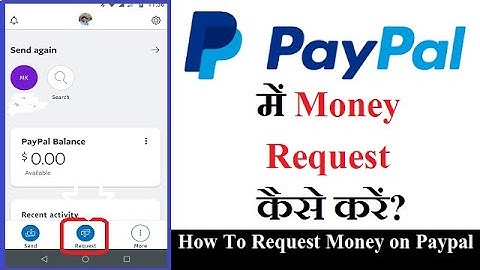When it comes to online payments, no other platform comes close to the effectiveness and convenience of PayPal. The biggest payment provider in the world, PayPal has helped millions of tradespeople, professionals, freelancers, and businesses process payments safely and securely. However, if you’ve been using PayPal for a while now, you already know that these payments don’t come cheap. Show
If you’re doing business solely through PayPal, you could potentially be losing a significant chunk of your fortune to PayPal fees every year alone. Factor in the conversion rate and you can see the major tradeoff that you need to pay just to get a quick and safe payment. So, how to avoid PayPal fees? Fortunately, there are ways that you can do to avoid these fees on PayPal and significantly reduce the amount that you give to PayPal. In this article, we’re going to talk about how you can potentially lower the blow of PayPal fees. What Fees Do PayPal Charge?Before we delve deeper, let’s first discuss these fees that PayPal charges for every transaction that you make on their platform. These fees for PayPal will be the requirement in exchange for a safe and secure payment. So, if you want to avoid scams or other misfortunes, PayPal is the best option. But again, these fees can sometimes add up and will lose you a great amount of money. What you pay and how much you will pay will depend largely on a number of different factors. PayPal charges will depend on the amount that you’re getting through the platform. So, if you receive money through the platform, you’ll need to deal with the fees PayPal has instilled for all of its users. You will pay a fee when you send or receive money. You will pay when you withdraw money from your PayPal account. Apart from that, you also have PayPal Credit, a working capital and other business fees to factor into the overall charges. All of these fees will accumulate into a single PayPal fee that you’ll need to pay for the process to continue. So, whether you receive of accept payments, you will feel the burden of these fees. To put things into perspective, it’s important to know the numbers to determine how much you’ll be paying to PayPal. The basic fee that you’ll have to pay is $0.30 USD and 2.9 percent for each transaction. So, the bigger the amount you’re getting, the higher the fees will inflate. The same goes if you send money via PayPal. Fortunately, there are different ways you can do to get around this and other fees that are charged to your PayPal account. Here’s a list of eight effective tips that you can use to do just that: 1. Request Payment as “Family or Friend”This option isn’t something you can do if you run your business exclusively through PayPal and accept payments through an active website. However, it you are a single contractor, or an independent freelance worker, then this can be the perfect option for you. All you need is a PayPal account to receive money. When someone pays you via PayPal, they will be asked if they are paying for either “Goods and Services” or “Family and Friends.” If your client chooses the former, then the payment will be charged with the 2.9 percent and $0.30 basic fee as discussed previously. However; if they choose the latter, then there will be no PayPal fees needed to be paid by the recipient. So if you accept payments as a lone freelance worker, you can choose the “Family and Friends” option to avoid the fees PayPal has waiting for you. Here are some important things that you should keep in mind: If you send them an invoice, the payment will go down as a business transaction, which will always incur transaction fees. You have two options: either ask them to pay directly and select the “Family and Friends” option, or you can send them a separate invoice via another payment service. There’s no payment protection for payments made through the “Family and Friends” option. That means there won’t be any chargebacks for any errors or mistakes made during payment. However, this is yet another benefit for the recipient. But if the sender doesn’t know you, they might assume that you’re trying to scam them. 2. Upgrade to a Business AccountIf you’re using PayPal exclusively for business purposes, then the “Family and Friends” payment option is out of the picture. However, you will benefit a lot from upgrading to your PayPal account from basic to business. There are a ton of perks to have when you upgrade to a business PayPal account. One such benefit is reduced fees. So whether you accept or send money via PayPal, the reduced fees will definitely help. Yes, you will still pay fees, unlike the previous option. However, it’s worth it for the convenience alone. At the same time, it will also allow you to take advantage of the PayPal Working Capital. So, if you’re running a business, consider upgrading to a business account ASAP. 3. File Your Taxes Like a Good CitizenDid you know that you can potentially deduct your PayPal fees by filing your tax returns properly? If not; well now you do. This fact is 100 percent true whether you’re in the United States, UK, or anywhere else in the globe for that matter. If you’re running a business that relies a lot on online payments, then simply add-up how much you pay over the course of a year and add them all to your deductions. At the same time, it’s also easier to add your income based on the amount of money that you received after paying the fees. However, this will likely make the invoicing and filing process longer and more time-consuming. Another thing to note is that it won’t cover the fees that you pay for converting and withdrawing. 4. Charge Your Customers/ClientsAnother effective option to avoid dealing with PayPal fees is that you request your clients or customers to pay for them instead. Start asking your customers to cover the costs of the money transfer. While it may sound like a risk, it’s not unusual for small business to request coverage for PayPal fees. You can simply add an extra three percent to every payment that’s made through PayPal. That way, you can ensure that your PayPal fees are covered with every payment transaction. In addition, most customers are already used to paying to use certain features and methods. While this is much more common with credit cards than PayPal., it’s still an effective tactic that many eCommerce businesses employ. It’s also not one that will raise suspicion or doubt. So, it’s a win-win situation whenever you do choose to use this option. However, this option will only work if you’re also giving your customers and clients other options. Otherwise, it will look like a greedy scheme on your part. If you have PayPal as the only option that you offer, then your only alternative is to increase the rate of your products and services by three to five percent to ensure that the PayPal fees are also covered. 5. Request that You Will Be Paid in a Specific CurrencyPayPal offers you separate wallets and receive money into both of them. However, when time comes that you’ll need to withdraw the money into your personal bank account, a currency conversion will be necessary. If you’re running a business account with more than a single PayPal wallet, then request that your customers pay you in your primary currency. That way, you won’t have to pay for currency conversion fees. If you’re running a business outside the US, then this is an issue that you’ll need to deal with. However, keep in mind that it can still impact US-based businesses. For instance, businesses who do a lot of work in other regions like Europe and are always switching between Dollars and Euros. 6. Use an Invoicing PlatformAn invoicing system like ReliaBills can also receive money with minimum fees comparing to how much money you’re spending on PayPal fees. For instance, you may find out that you’re losing tens of dollars a day because you’re accepting too many small payments and paying $0.30 every time. You may also find that currency conversions or “Goods and Services” payments are hurting your income. An invoicing software can direct you towards cheaper payment options while making it easier to fill your tax returns when that time comes. 7. Apply for Lower FeesIf the money you get out of PayPal is more than $3,000 a month, then you can apply to pay a reduced rate. Doing so is actually crucial since you’re earning more; thus, you’re also spending more on fees. That also makes you a valuable asset to PayPal. So, rather than they risk losing you, the platform will make you an offer that will give you reasons to stay. Business customers can get those 2.9 percent fees reduced to only two percent. While it may not sound like a huge amount of money, especially if you’re only earning a few hundreds of dollars. However, if you receive $3,000 and above, you will feel the effect of that 0.9 percent off of your PayPal fees. For instance, if you receive $5,000 in monthly payments, you will save $420 a year. Just keep in mind that it doesn’t matter how much money you earn. But if you have the chance to apply for lower fees – even if it’s the minimum – you need to take it. 8. Look for an AlternativeFinally, if you still think that PayPal’s fees are too unreasonable for your taste and you can’t find a way around them, it might be time to consider alternative payment platforms. We’ve done our research and have come up with three of the best alternative options that you can consider:
Wrapping UpAs you can probably notice, there aren’t any great alternatives to the level of security and quickness that PayPal provides. So, make sure you use all the methods mentioned in this guide. If it’s a viable option; you need to take it. Related Articles:
How do I avoid PayPal fees when sending money?The PayPal transaction fee is waived if you send money from your online PayPal account, a linked bank account, or from the PayPal Cash app. But you'll be hit with a 2.9% fee and a 30-cent fixed transaction fee if you make a payment with your PayPal credit, debit or credit card.
Does PayPal have fee to send money?Sending Money Within the U.S.
If you send money using your PayPal funds, PayPal Cash, or a bank account linked to PayPal, the fee is waived. On the other hand, if you make a payment using your debit or credit card, or PayPal Credit, you have to pay a fee of 2.9% + a fixed fee, depending on the currency.
How do I avoid paying fees on PayPal friends and family?When sending money via “friends and family”, if the person sending the money is using a credit or debit card then the payor is charged a 2.9% fee with the option to pass that fee on to the recipient of the money. If the payor is paying from their bank account, they can send money to anyone in the US for no fee.
Why is PayPal charging me a fee to send money to a friend?While you can transfer funds from your PayPal account to your bank for free, there is a fee for instant transfers: 1% of the transfer amount, capped at $10 per transaction. You'd also pay a fee to send money to a friend or family member using a debit or credit card.
|

Related Posts
Advertising
LATEST NEWS
Advertising
Populer
Advertising
About

Copyright © 2024 paraquee Inc.


















